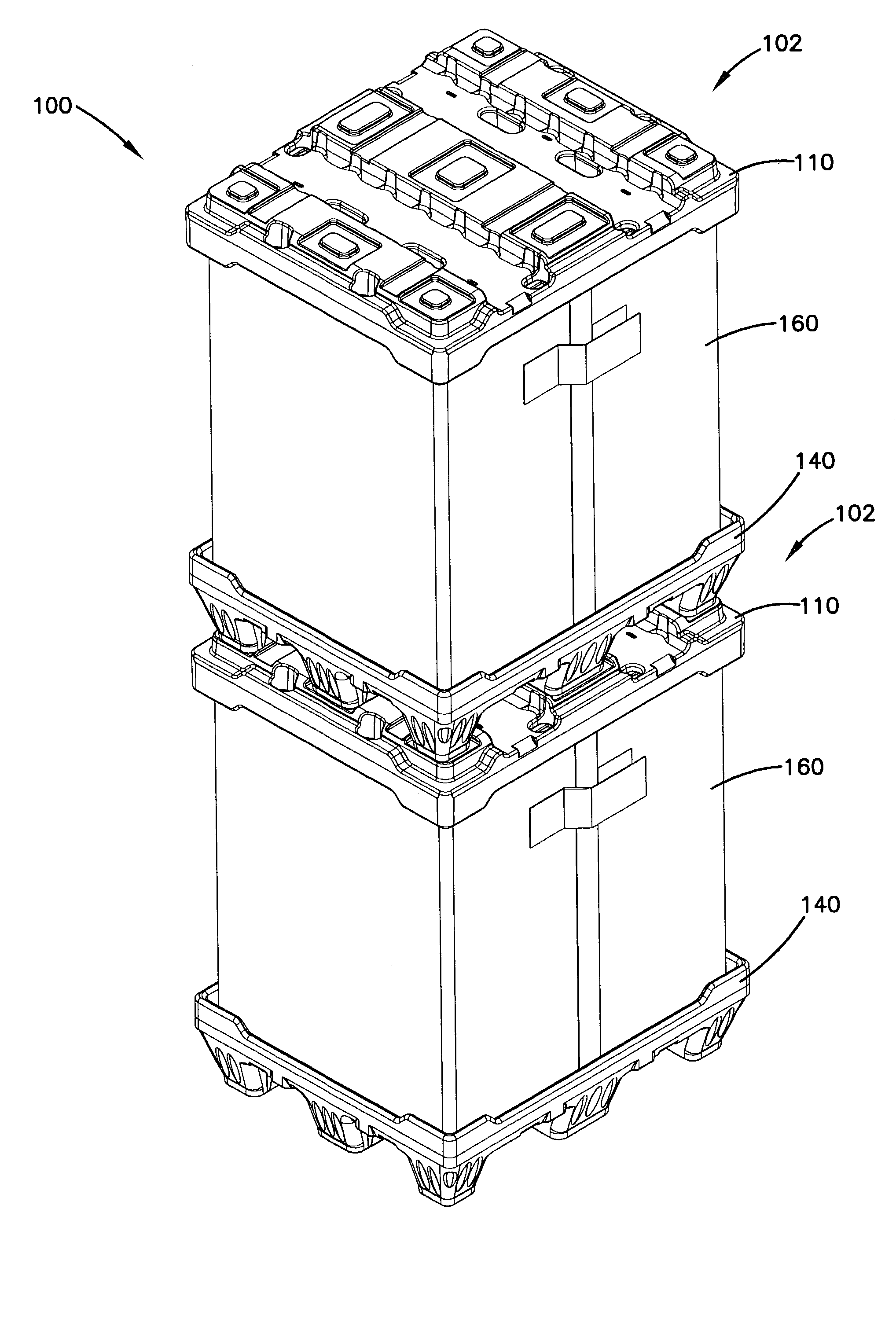Container
a container and container technology, applied in the field of containers, can solve the problems of insufficient strength of materials to be comparable, and the difficulty of handling heavy materials, and achieve the effect of outweighing the strength benefits of materials and the inability to meet the requirements of large-scale production
- Summary
- Abstract
- Description
- Claims
- Application Information
AI Technical Summary
Benefits of technology
Problems solved by technology
Method used
Image
Examples
Embodiment Construction
[0034]Referring now to the drawings, wherein like reference numerals and letters indicate corresponding structure throughout the several views, there is shown a container system, generally designated 100. As shown in FIG. 1, the container system 100 includes a first embodiment shown in FIG. 1 and generally designated 102, and a second embodiment of the container system, generally designated 104, shown in FIG. 12. Each of the containers 102 and 104 include interchangeable covers 110 and interchangeable pallet bases 140. The first embodiment 102 also includes a sidewall 160 while the second embodiment 104 has a sidewall 180, shown respectively in FIGS. 2 and 13. As explained hereinafter, the sidewall portions 160 and 180 are interchangeable and may be utilized with the same cover 110 and pallet 140. Moreover, the containers 102 and 104 are both stackable with the other embodiment as well.
[0035]Referring now to FIGS. 3 and 4, the cover 110 includes a planar deck portion 112 configured ...
PUM
 Login to View More
Login to View More Abstract
Description
Claims
Application Information
 Login to View More
Login to View More - R&D
- Intellectual Property
- Life Sciences
- Materials
- Tech Scout
- Unparalleled Data Quality
- Higher Quality Content
- 60% Fewer Hallucinations
Browse by: Latest US Patents, China's latest patents, Technical Efficacy Thesaurus, Application Domain, Technology Topic, Popular Technical Reports.
© 2025 PatSnap. All rights reserved.Legal|Privacy policy|Modern Slavery Act Transparency Statement|Sitemap|About US| Contact US: help@patsnap.com



